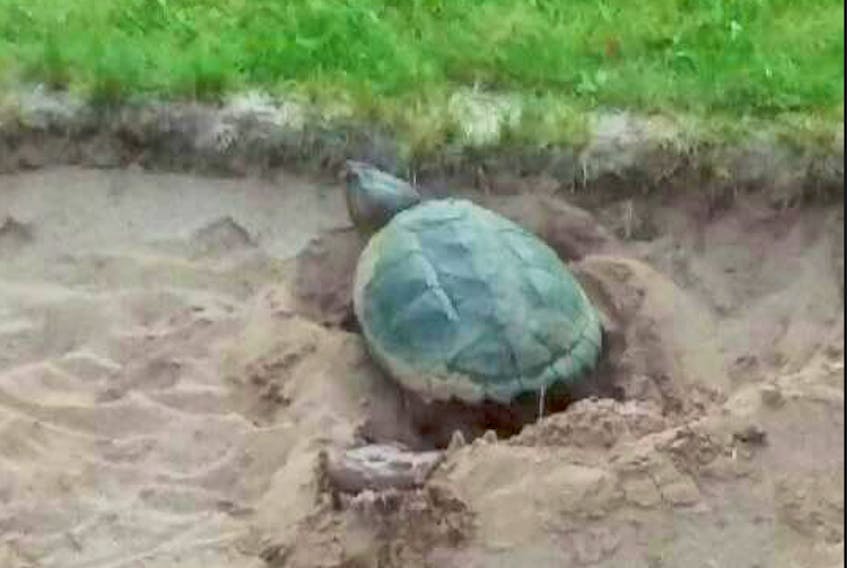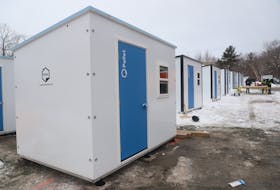DEBERT, N.S. — For one turtle, a sand trap at the Debert Golf Club looked like the ideal spot to lay her eggs.
For the second year, a snapping turtle who’s been given the name Shelley has laid eggs in the sand at hole #7.
“We thought she’d left after she laid her eggs last year, but she was back on July 15,” said Mark Webb, manager of the club. “We haven’t seen her since then.”
Shelley was rescued off the highway last year by Webb’s friend Jeff Davis. The golf course has a couple of ponds they thought might be suitable for the turtle, who they called Sheldon until she laid eggs.
“It was September when they hatched, and that was pretty exciting,” said Webb. “They were only about the size of a toonie.”
He helped the three young ones he saw make it safely to the pond between holes 6 and 7, where they quickly went underwater.
“The eggs are covered over with sand and we’ve got the area roped off,” said Webb. “People are respecting the barriers and looking around the ponds to see if they can spot a turtle.
“With the eggs, the waiting game has started.”
Andrew Hebda, curator of zoology with the Nova Scotia Museum, said snapping turtles often lay their eggs in June, but because it’s been colder than usual they’re being laid later in the summer.
“Eggs may not hatch until October. If we have a cool fall and early winter, this year's hatchlings may actually not emerge until next spring.”
Turtle eggs are sometimes eaten by predators such as raccoons, and mesh can be placed over a nest to protect them.
“They have a very small rate of survival to reproductive age, which is about five,” said Hebda.
“We suspect they may live in excess of 100 years, with 40-60 being an average lifespan. Cars are the biggest danger to them.”
He cautions that they have “remarkably long necks” and a beak that can give a nasty bite, so anyone needing to move one should keep hands away from the front and sides.
Webb said Shelley is the first turtle he’s seen around the golf course, although there is a male somewhere nearby.
He asks that anyone who sees a baby turtle while golfing take a photo and let him know so he can make sure the hatchling makes it safely to the pond.
Snapping Turtle Facts:
- The largest freshwater turtle in Nova Scotia, can have a shell length of more than 50 cm, although 22-35 cm is average.
- Live in shallow lakes and streams
- Neck can reach halfway back to its tail
- In water, they swim quickly away from humans.
- Hibernate underwater in winter
- Have a good sense of smell but poor vision
- If threatened, they will lunge forward to bite.
RELATED









